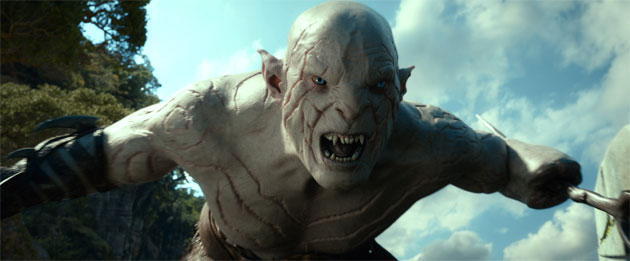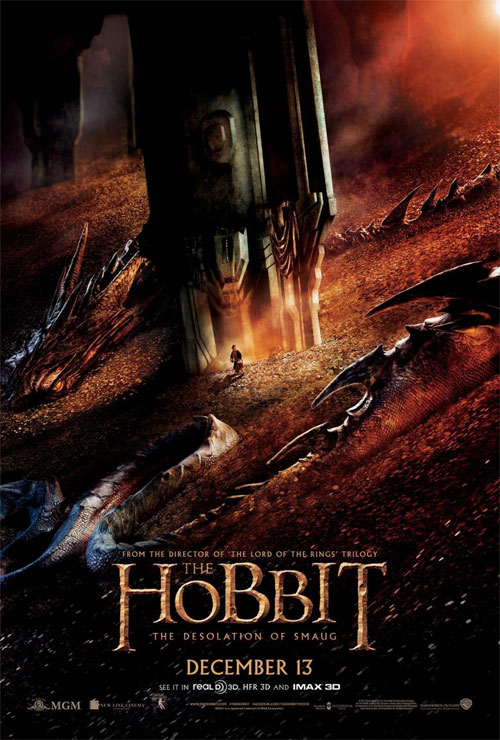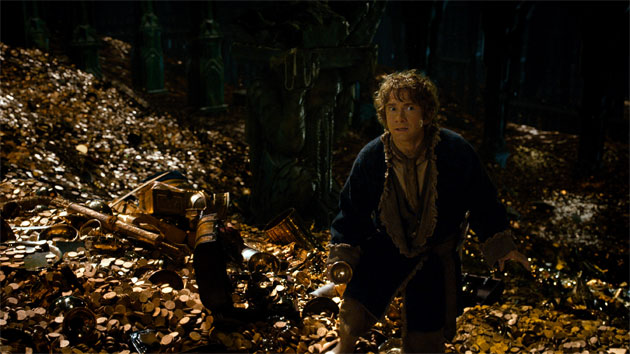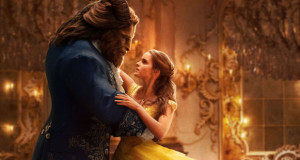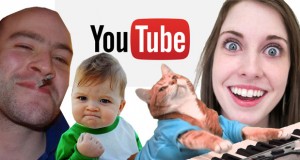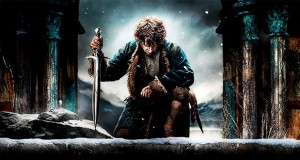Director: Peter Jackson
Writers: Fran Walsh, Phillipa Boyens
Cast: Martin Freeman, Ian McKellan, Richard Armitage
The Desolation of Smaug is the second installment in Peter Jackson’s grandoise adaptation of JRR Tolkien’s The Hobbit. We pick up almost immediately where we left off in An Unexpected Journey with Bilbo and the Company desperately trying to escape Azog and his orc army. Their mission: to return to the Lonely Mountain and reclaim the invaluable Arkenstone jewel from the dragon Smaug.
Structurally, The Hobbit trilogy has a lot of parallels with The Lord of the Rings. The first installment of both trilogies focuses on the hobbits and the enormity of the task presented to them. In the second installment, the scope of the story expands and we become invested in the journey of the outcast who would be king (Aragorn in LOTR, Thorin in The Hobbit).
The Desolation of Smaug introduces plenty of new subplots and characters and is all the richer for it. There is the smuggler Bard – a resident of Lake Town and a descendent of the man who tried and failed to protect the water village from Smaug’s attack. Bard carries the burden of his ancestors failings but you suspect before long he will have a chance to atone for their failures.
Wood Elves take up a prominent role in The Desolation of Smaug with Orlando Bloom reprising his role as Legolas and Evangeline Lilly taking on a new role as Tauriel, a capable and compassionate warrior who is more taken by the plight of the dwarves than the rest of her kind. I still remember what a star-making role Legolas was for Orlando Bloom and how it became the launching pad for his acting career. Given how interest in his career has diminished quite significantly in recent years, I was surprised at how much I enjoyed his performance in The Desolation of Smaug. I think Jackson knows how to get the best of Bloom. This is a role that requires him to say very little, look attractive and slay orcs in elegant fashion. It worked ten years ago and it still works today.
Given how closely An Unexpected Journey followed the source material, I was interested to see what Peter Jackson would do with The Desolation of Smaug where we would really start to see him take some creative license with the story and add his own content. Overall, I came away satisfied. In the book, we don’t really know what Gandalf does when he abruptly abandons The Company at the edge of Mirkwood Forest. Now we know! Sure, Legolas, Tauriel and their love triangle with the dwarf Kili wasn’t in the books but it sets some foundations for the events of the third film which pit the dwarves and elves against one another. As with The Lord of the Rings, I thought Jackson’s modifications to the story made sense in the context of a film narrative and were respectful to the themes of Tolkien’s works.
In my review of An Unexpected Journey, I spoke of Jackson’s use of HFR and how I felt it heightened the look and feel of the film (although it has certainly been polarizing with audiences). After The Desolation of Smaug, once again I feel compelled to champion this format. High Frame Rate gives the viewer an uncommon clarity and sharpness of vision which makes it seem as though you’re watching a stage play. What I felt was particularly effective in The Desolation of Smaug was the sense of weight and heft it gave to the special effects and CGI characters. We all know the worst kind of CGI in films is where the characters look ‘pasted in’. You can see some of the most famous offenders in The Scorpion King and Star Wars Episode I: The Phantom Menace. At its worst, I feel it can really break my suspension of disbelief in a film whereas older cinematic techniques like animatronics and stop motion can still capture my imagination because I can still see actors interacting with something that is physically in front of them.
When Legolas clashes with the orcs and Bilbo confronts Smaug, I was taken aback by how impressive the CGI was and how the HFR made them look as though they were real, tangible creatures that were really there. Am I alone in thinking this? Obviously I’m not the only fan but its likely that I’m still in the minority. I don’t think HFR is necessary for every film but I do think that for the effects laden blockbusters that get pumped out by the dozen each year, it could only be an improvement. I’d love to see Cameron use this technique with the next Avatar film.
I digress. I will say that I found the action sequences in The Desolation of Smaug to be a cut above what we got in An Unexpected Journey. The Barrels Down The River sequence was a fantastic blend of thrills, escapism and slapstick. Most contemporary Hollywood films are pretty poe-faced when it comes to action scenes. Just look how humourless and deadpan Man of Steel was last year, all flailing fists, frowning and knocking down skyscrapers. With Jackson’s films, the action always reminds me of the bravado, showmanship and humour that you’d get with old Errol Flynn films. I wish more directors still had that sense of fun and adventure in their approach.
The highlight of the film is of course Frodo’s confrontation with Smaug. Benedict Cumberbatch is a fantastic as the voice of Smaug. He is regal, cerebral and terrifying. The confrontation isn’t rushed. It’s a game of wits that ends on a cliffhanger. Another twelve long months before we get the conclusion.
I didn’t know what to expect with The Desolation of Smaug but what I got was better than I’d hoped for. It’s Jackson’s best film in some time. The characters are larger than life, the effects are incredible and the story is two and a half hours of fun, adventure and escapism.
Review Overview
RATING
GREAT
Summary : It needs to be seen in its full audio visual glory (3D, HFR, IMAX) to be fully appreciated for its spectacle but this is a worthy successor that improves upon An Unexpected Journey with better action and richer characters.
 The FAT Website est. 1999
The FAT Website est. 1999

